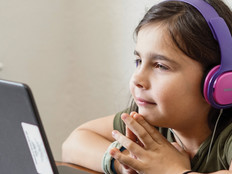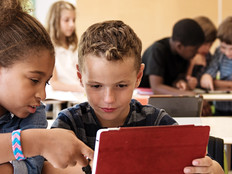Identifying Signs of Cyberbullying in the Remote Classroom
Preventing harmful classroom behavior starts with proper detection. It’s crucial to pay attention to any changes in student engagement or individual behavior.
Signs that children are being cyberbullied are often subtle and can be as simple as being reluctant to use their cameras during a video call. According to the Cyberbullying Research Center, victims often report feeling frustrated, angry or depressed. Research indicates that if a child becomes uncharacteristically withdrawn, displays anxious behavior while using devices, avoids talking about their online activity or stops using devices altogether, it could be linked to cyberbullying. On the other hand, parents should also look for signs that their children are cyberbullying others. Common signs include hiding their screens, avoiding discussions about online activity, using devices constantly and having multiple online accounts.
Fostering Positive Online Learning Environments for Students
While spotting warning signs is an important step toward eliminating cyberbullying in the virtual classroom, prevention is also critical. This could start with fostering a positive climate and implementing measures that prioritize student safety online.
In schools with positive learning environments, the Cyberbullying Research Center found, students experienced fewer instances of cyberbullying and problematic discourse.
To develop such an environment, the Cyberbullying Research Center advises teachers to promote awareness of the risks and impacts of cyberbullying and provide resources for students to report it. Many schools, including the School District of Philadelphia, offer a series of cyberbullying resources for parents and students, including centralized reporting forms. A reporting resource collects vital data to streamline the decision-making process for administrators and helps victims receive an immediate response from their schools.
Fostering Online Safety and Digital Citizenship with Tech Tools
Some education technology platforms come with built-in features designed to mitigate cyberbullying. Many platforms, including Google for Education and Lightspeed Systems Classroom, offer safety tools and features to prevent inappropriate online activity and foster digital citizenship.
Lightspeed Systems Classroom, a classroom management solution, prioritizes internet safety with helpful tools and filters. This platform can evaluate student browsing data and notify teachers of unusual activity in real time. With the “zones” feature, teachers can restrict internet access to limit distractions and shield students from harmful websites. This solution also lets teachers view students’ screens to ensure appropriate usage and behavior.
Google also provides digital safety tools for the classroom, including the Be Internet Awesome game. This interactive game teaches students about the importance of online safety and helps them work with their peers to combat bullying, stop hackers and foster responsible habits.
GoGuardian is another popular platform for remote education, and it also emphasizes internet safety. Its web filter, GoGuardian Admin, allows teachers to monitor and manage any device in their networks. With YouTube filtering options, teachers can block inappropriate comments, keywords, live chats and entire video categories. It also includes a parent reporting app that allows teachers to share student activity directly with parents or guardians.
MORE ON EDTECH: K–12 leaders weigh threats and benefits of increased web monitoring.











